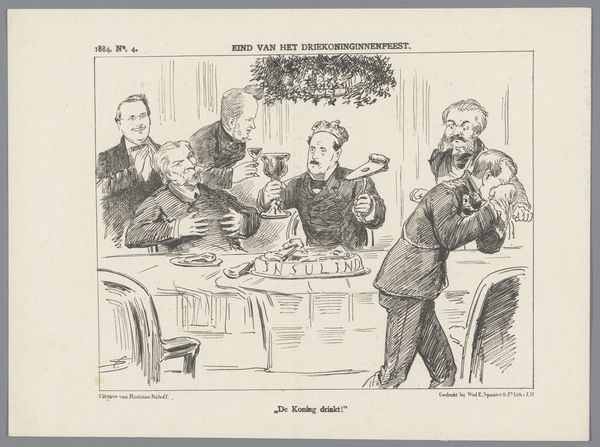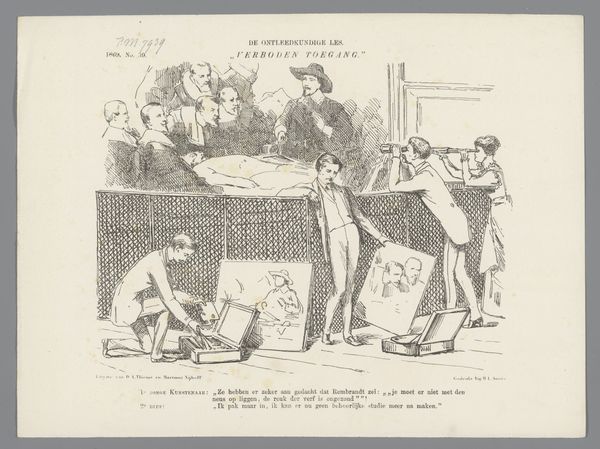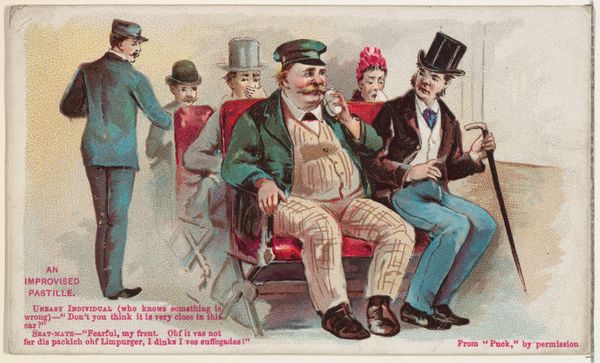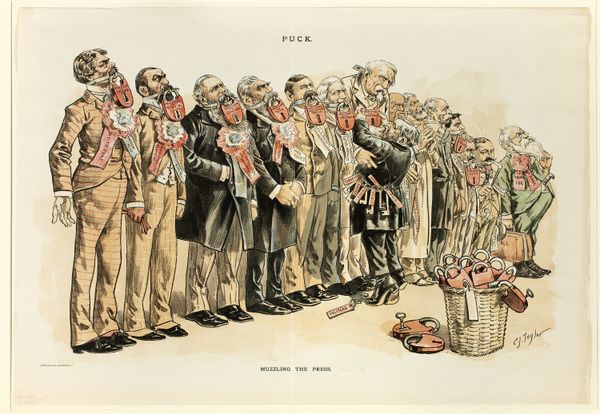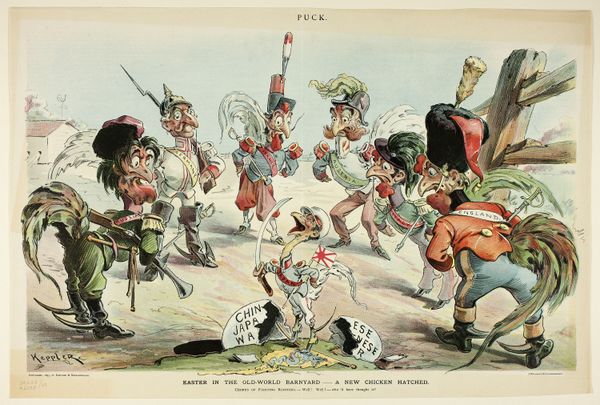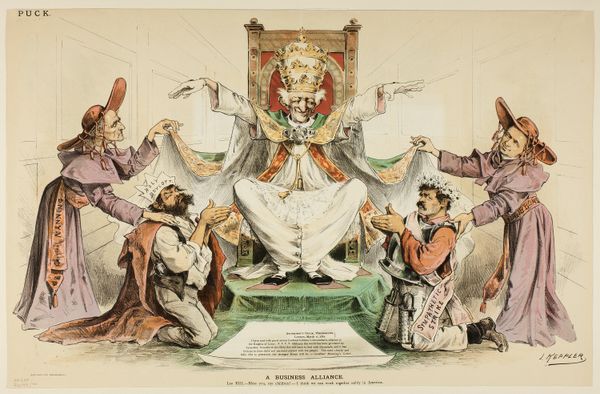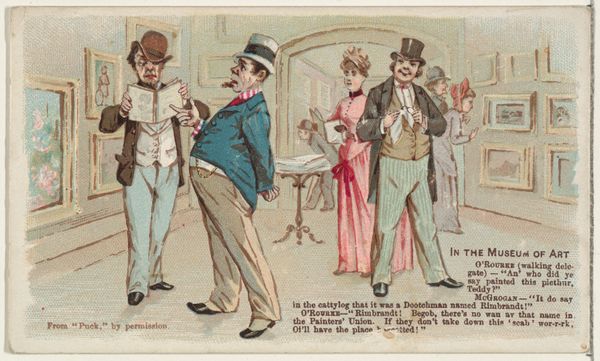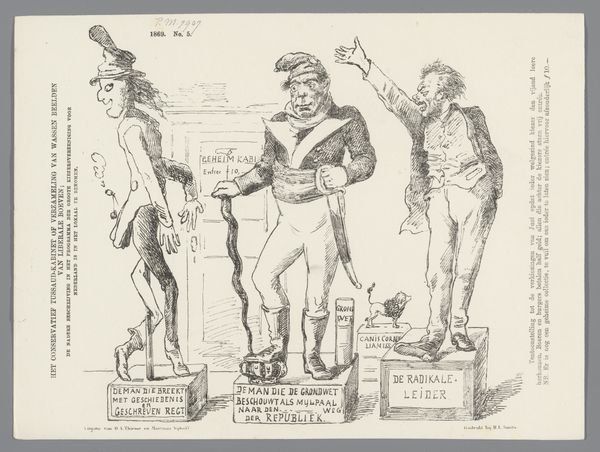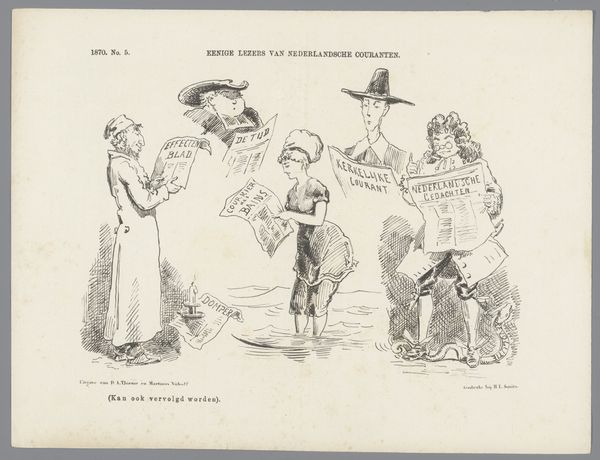
The Last Three Hopes of the Republican Party, from Puck 1892
0:00
0:00
drawing, graphic-art, lithograph, print
#
drawing
#
graphic-art
#
lithograph
# print
#
caricature
#
united-states
#
cartoon carciture
Dimensions: 308 × 480 mm
Copyright: Public Domain
Editor: So, here we have "The Last Three Hopes of the Republican Party" by Frederick Burr Opper, a lithograph from 1892. It’s really…busy. There’s so much crammed in, it's overwhelming at first glance. What's your take on it? Curator: I'm drawn to how Opper uses the printing process itself to deliver the political message. Look at the sheer density of the linework. The lithograph allowed for mass production, disseminating this critique far and wide. Notice how each character is defined not only by their form but by the deliberate accumulation of ink. It speaks to the "Republican Corruption Fund" he depicts – built on layers of manufacture and perhaps, in his eyes, deception. Editor: I see what you mean. The detail is amazing, but almost feels like propaganda because it uses exaggerated forms to push a certain agenda and demonize groups of people. Is the technique integral to its meaning? Curator: Absolutely. Lithography, with its relatively cheap production costs at the time, democratized the distribution of images. Here, it is not about art for art's sake, but art directly implicated in a political struggle. Consider the materiality; ink on paper meant this image could be readily circulated and consumed as quickly as news itself. What do you make of that inscription above the central character? Editor: "In Soap we Trust." Given what we have discussed, I guess that’s playing on the concept of 'soaping' votes – corrupting them with bribes? Implying that even something as seemingly clean is, in the context of the Republican Party, dirtied? Curator: Precisely! It brings focus on labor. Even “clean” industries in the U.S. benefit from certain economic exploitation; by purchasing those products you're implicitly complicit. And as such, is the lithograph implicated by its material reality in what Opper depicts? What a striking self-reflection! Editor: That’s a lot to consider. I hadn't thought about the print *itself* being part of the statement. It changes how I view the piece and similar political cartoons in general.
Comments
No comments
Be the first to comment and join the conversation on the ultimate creative platform.
